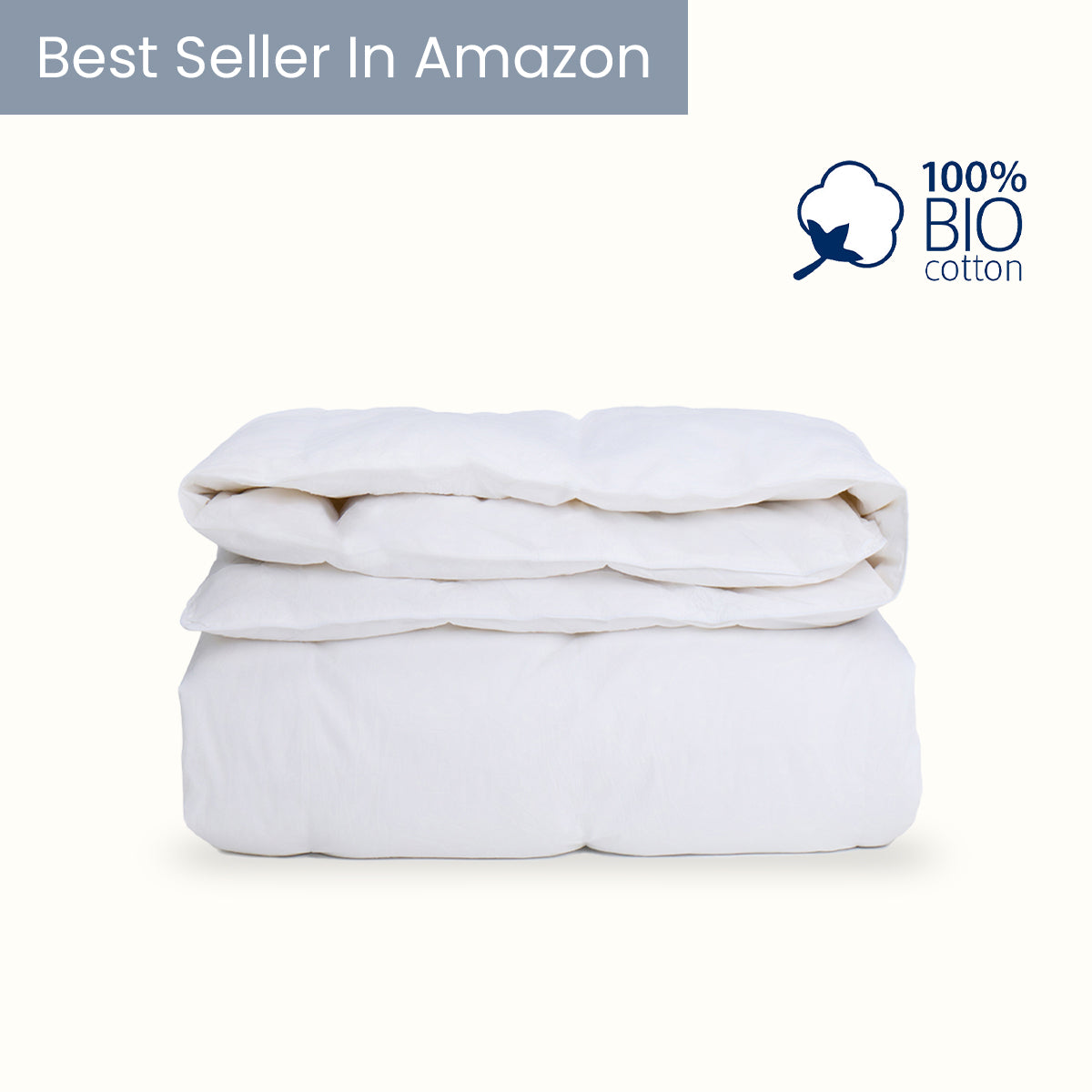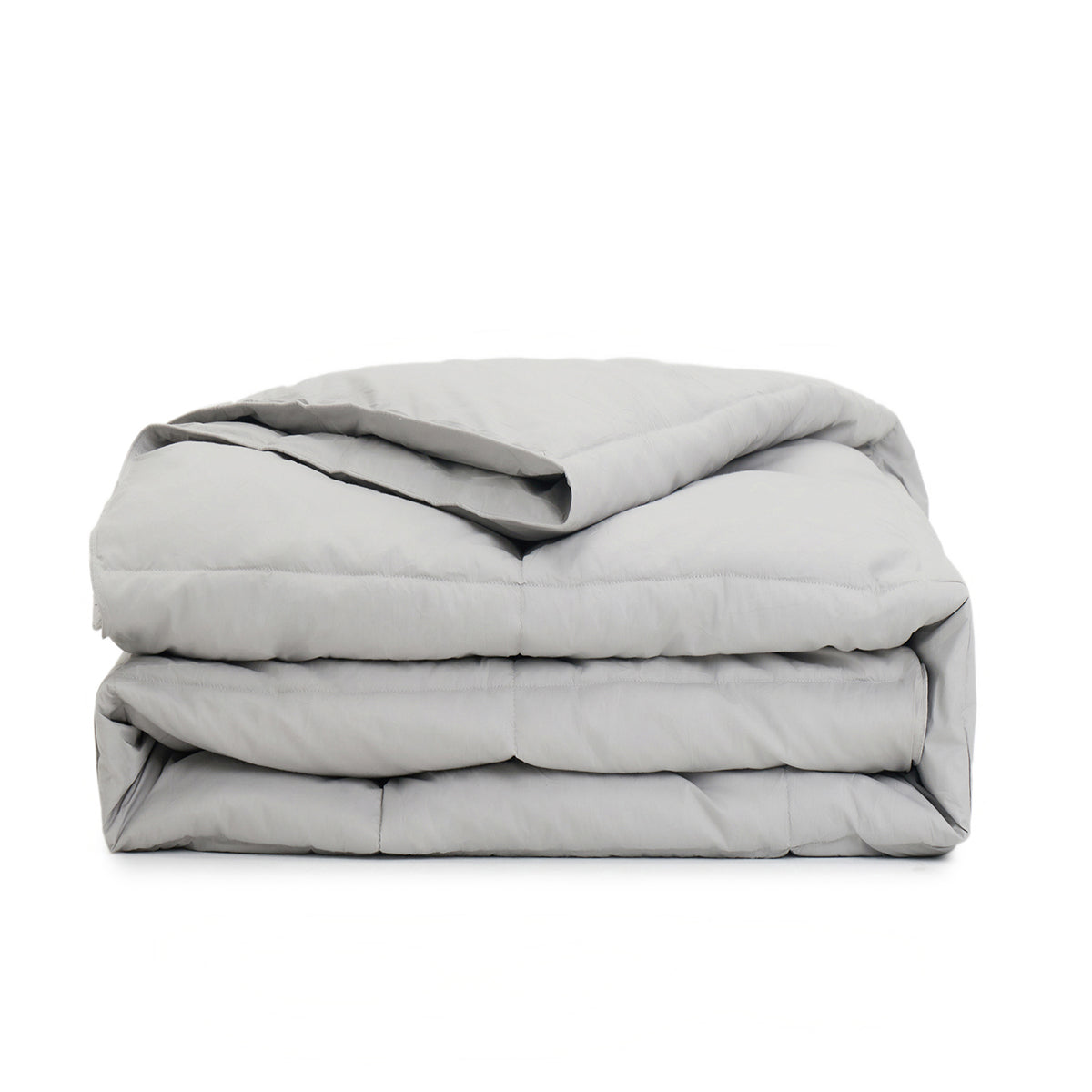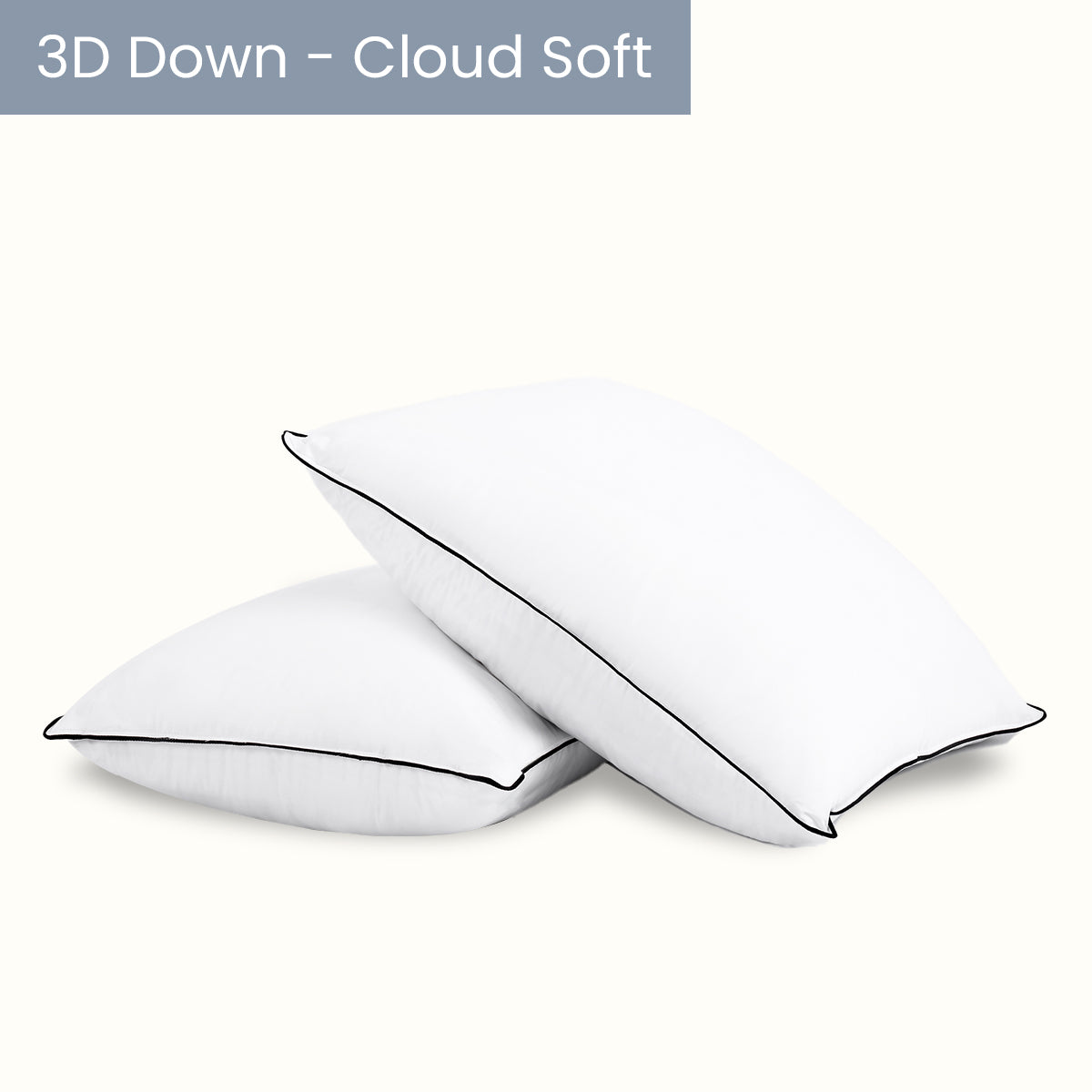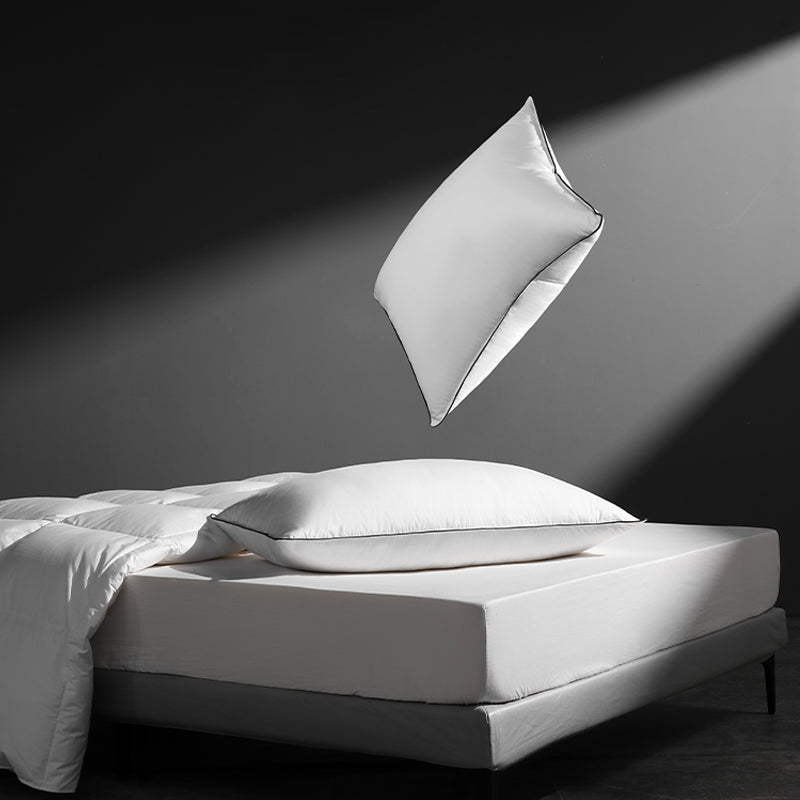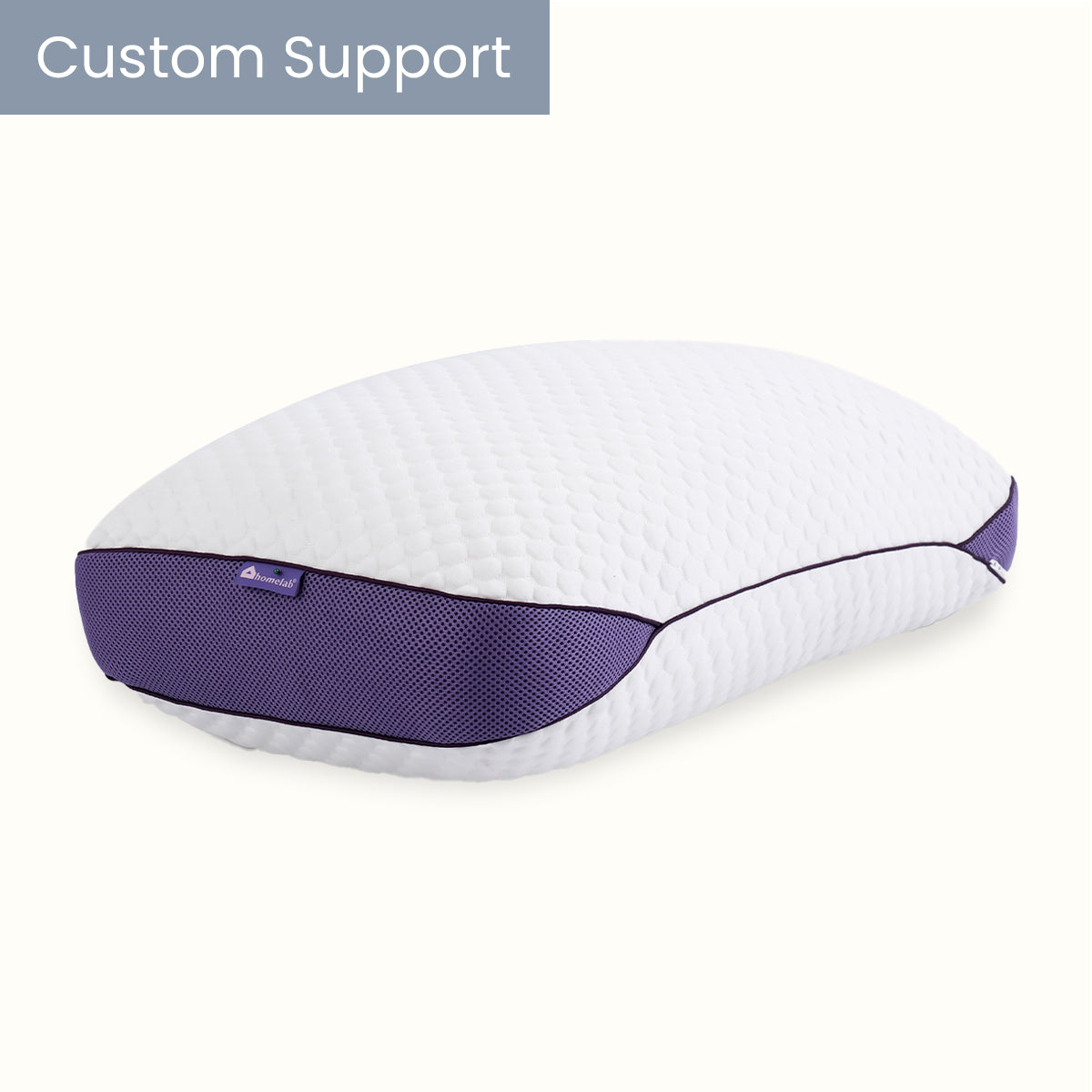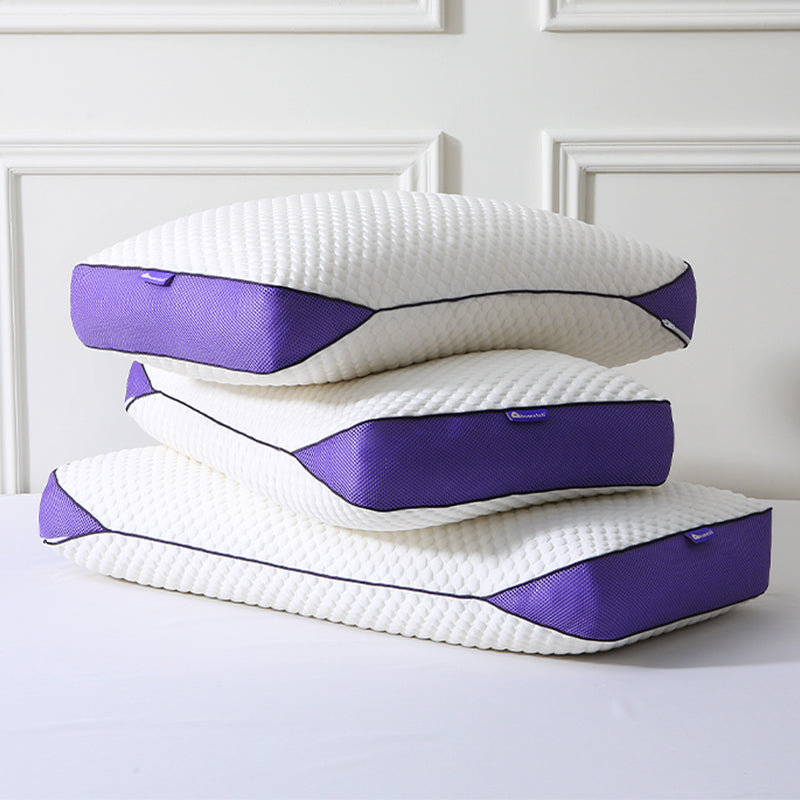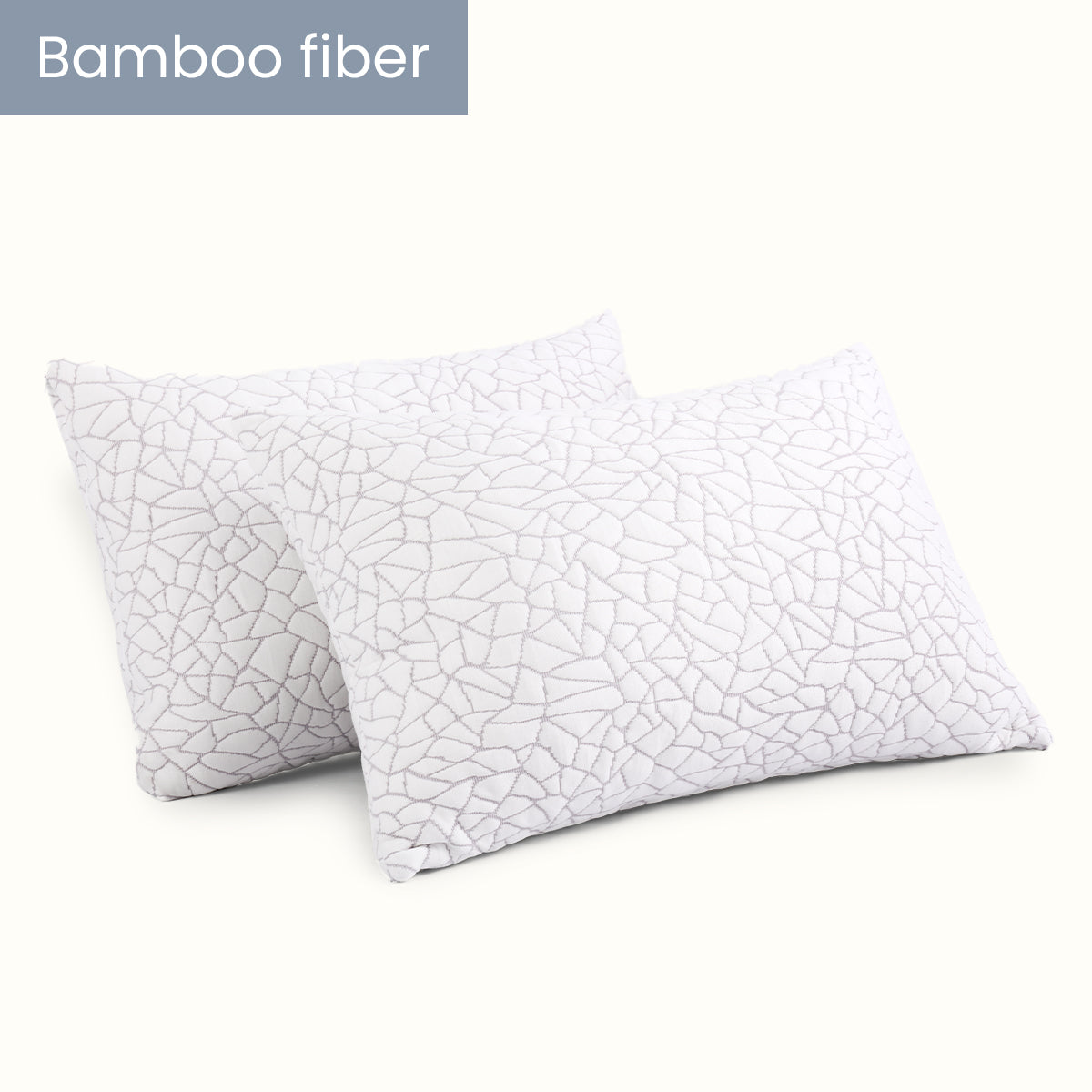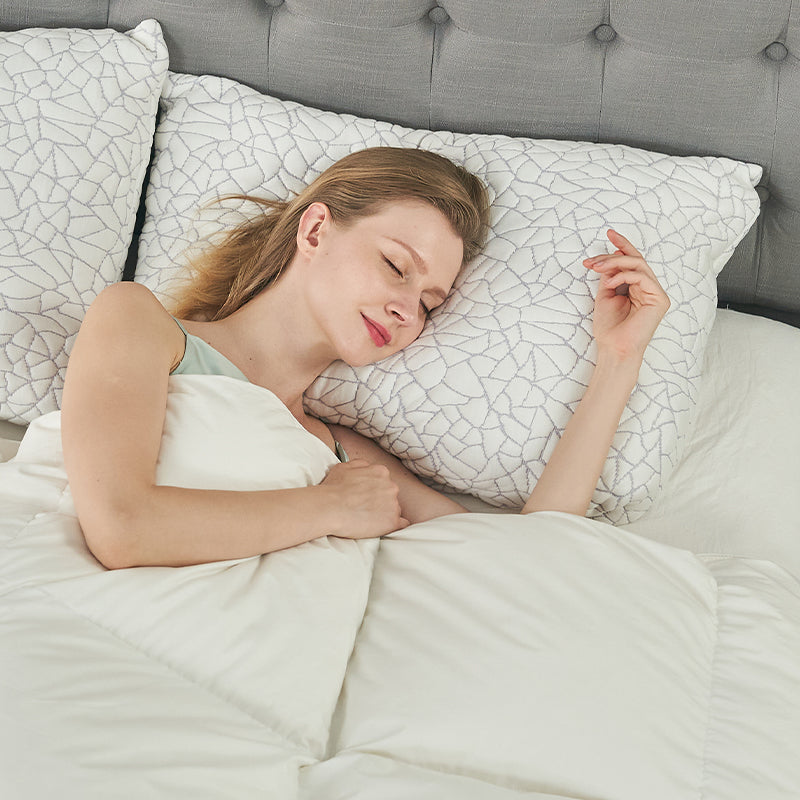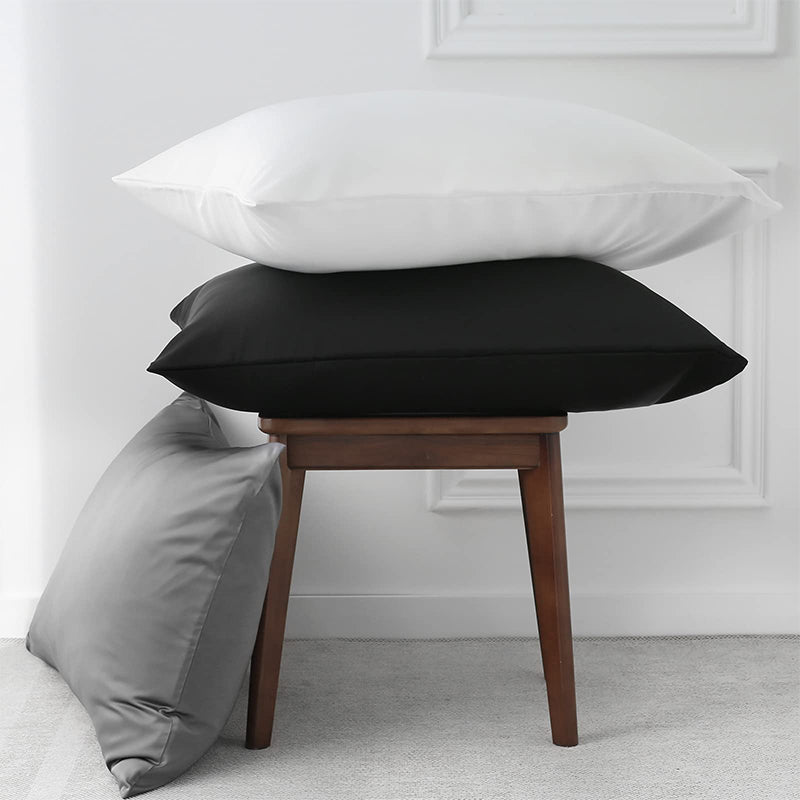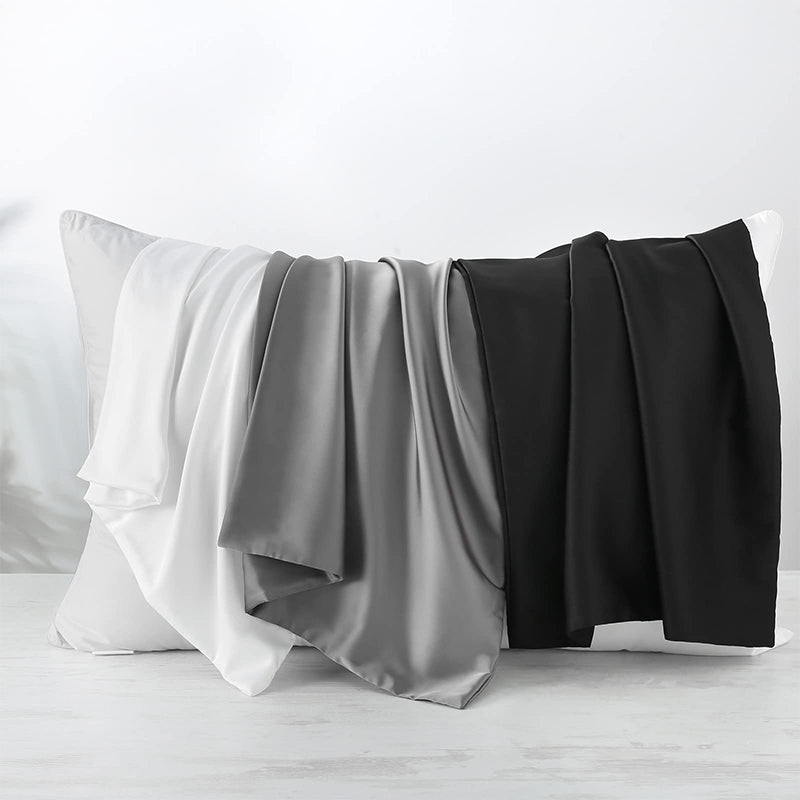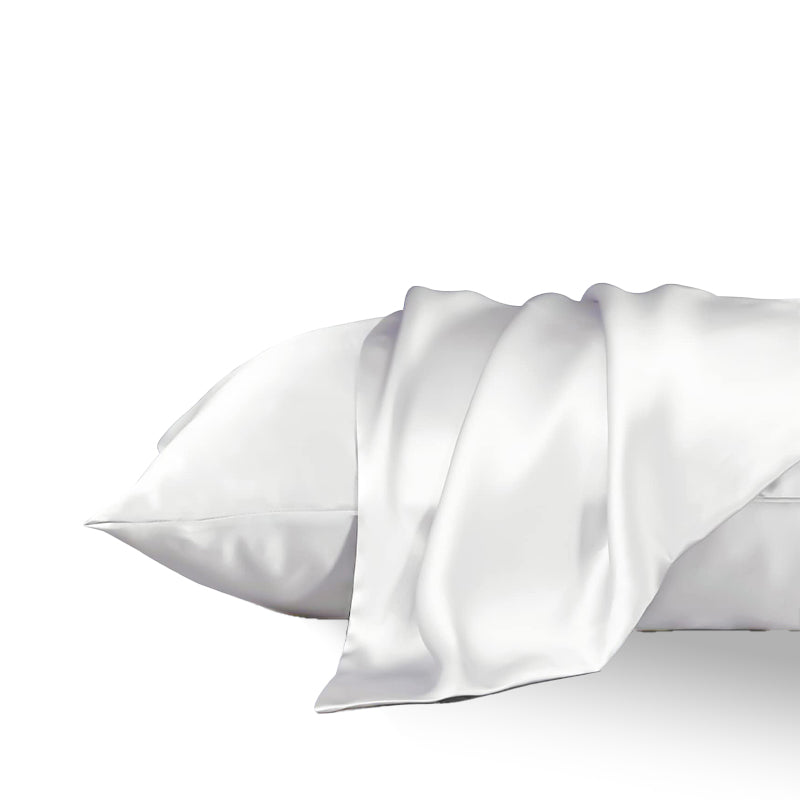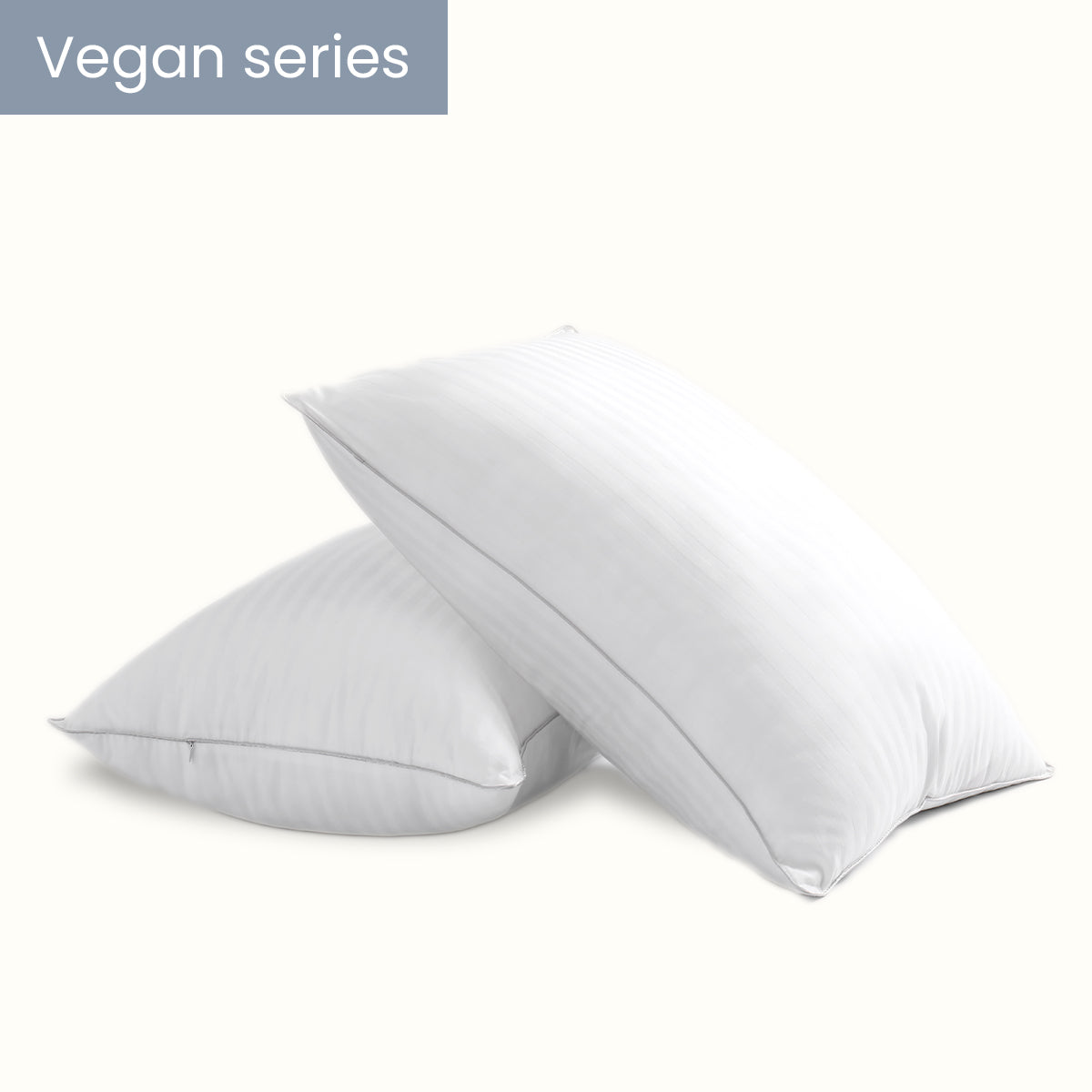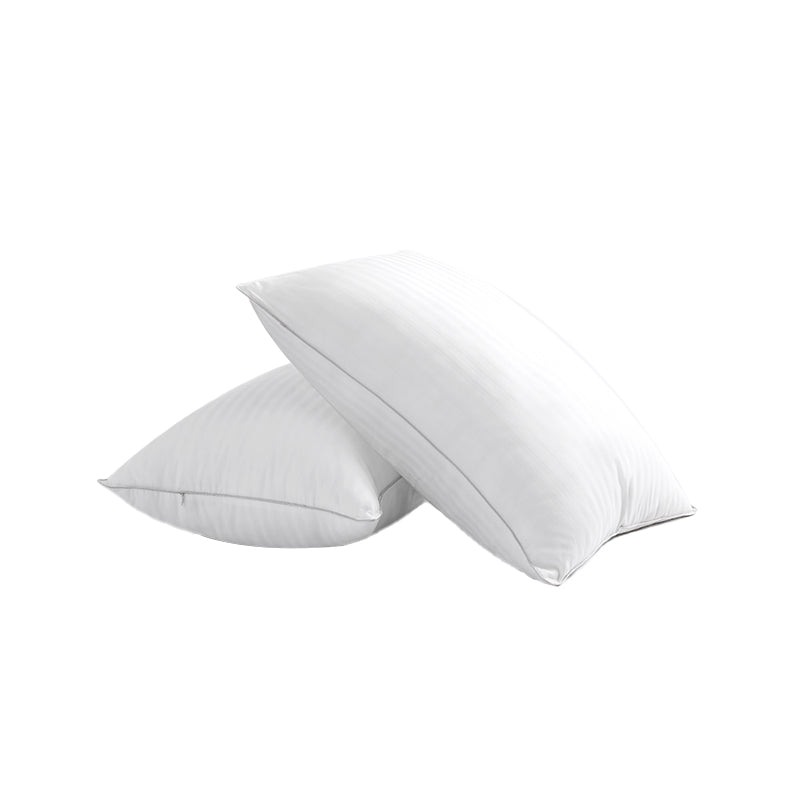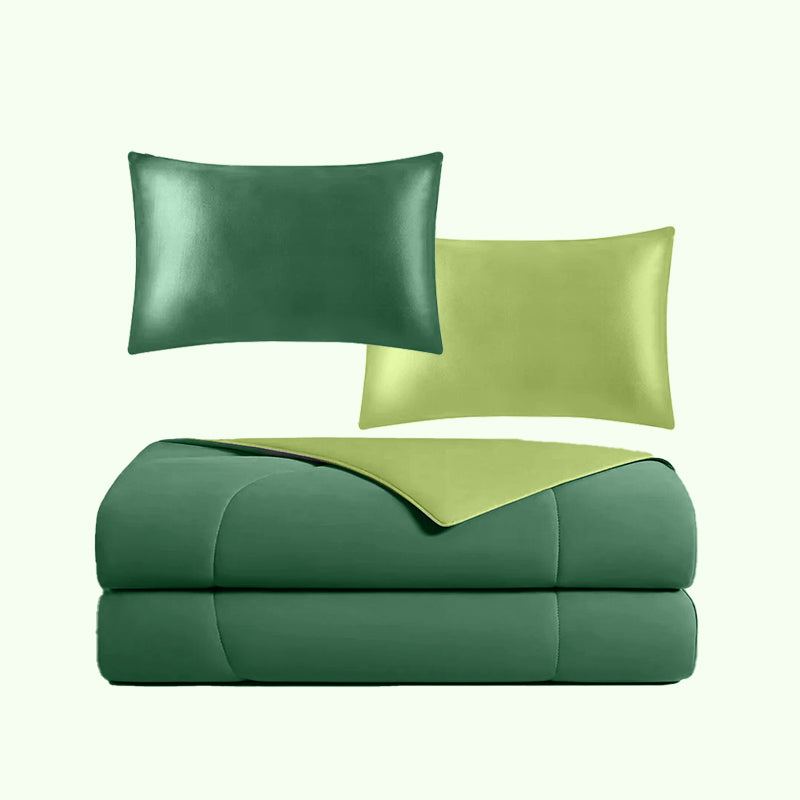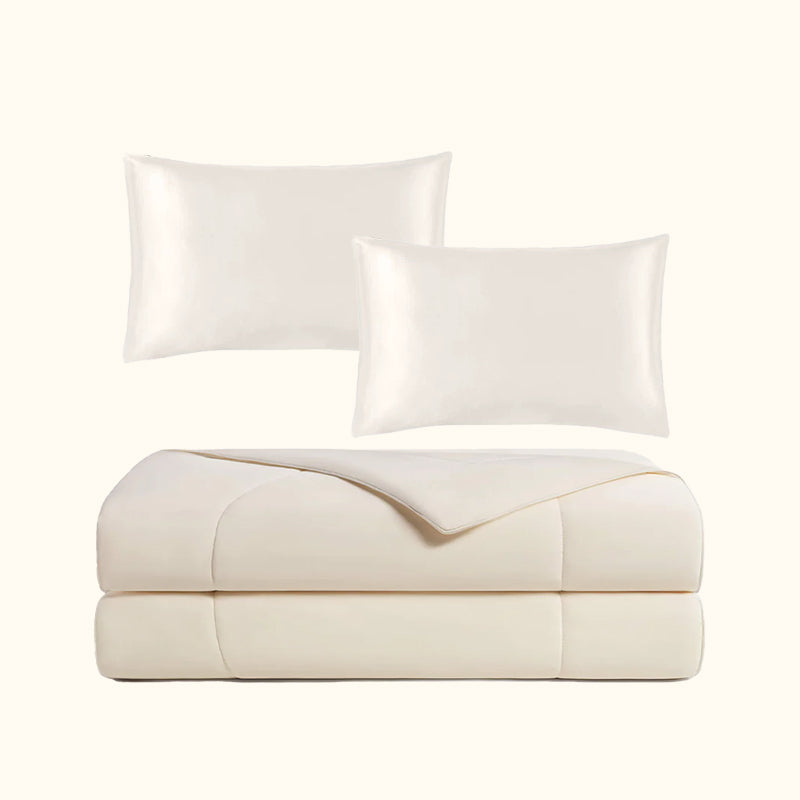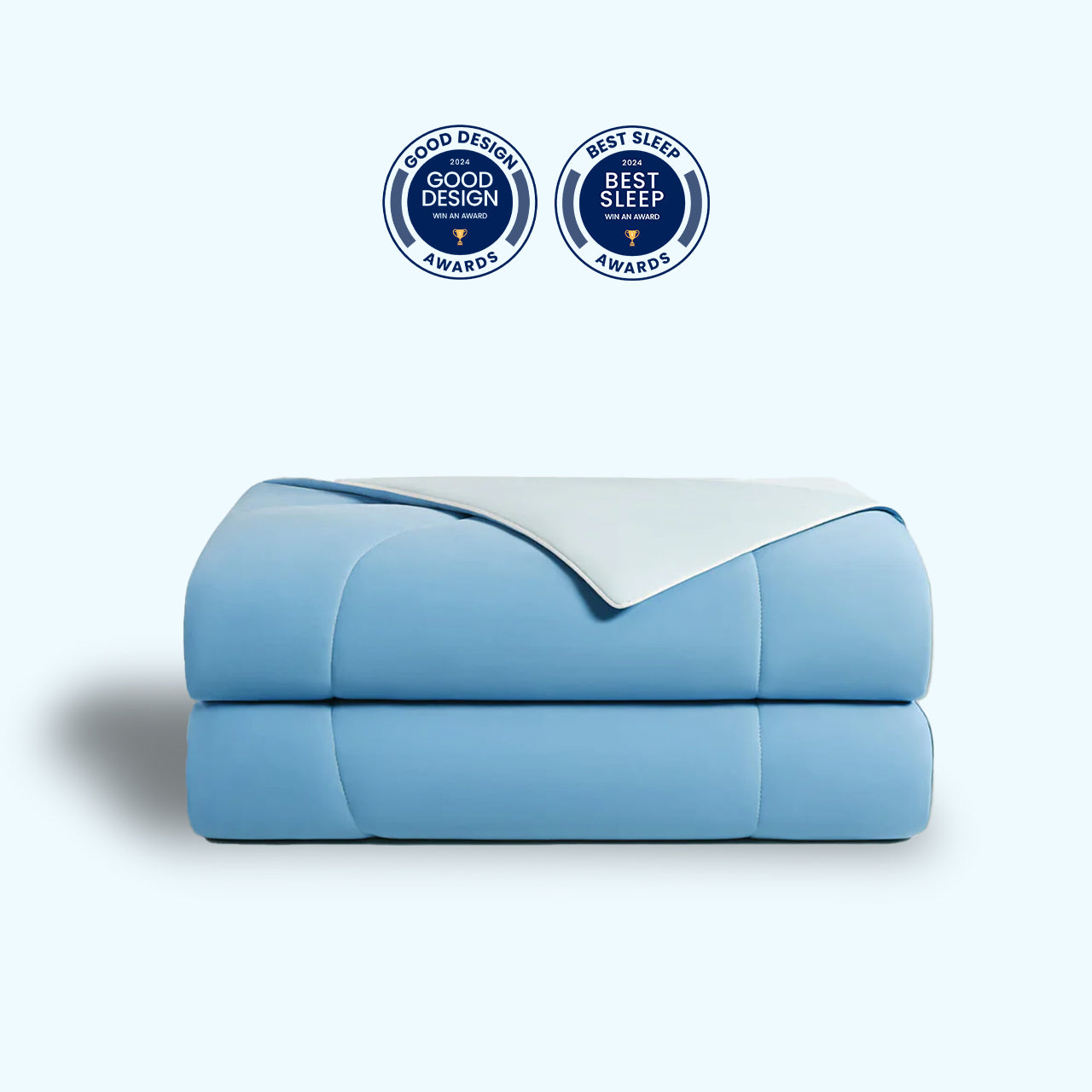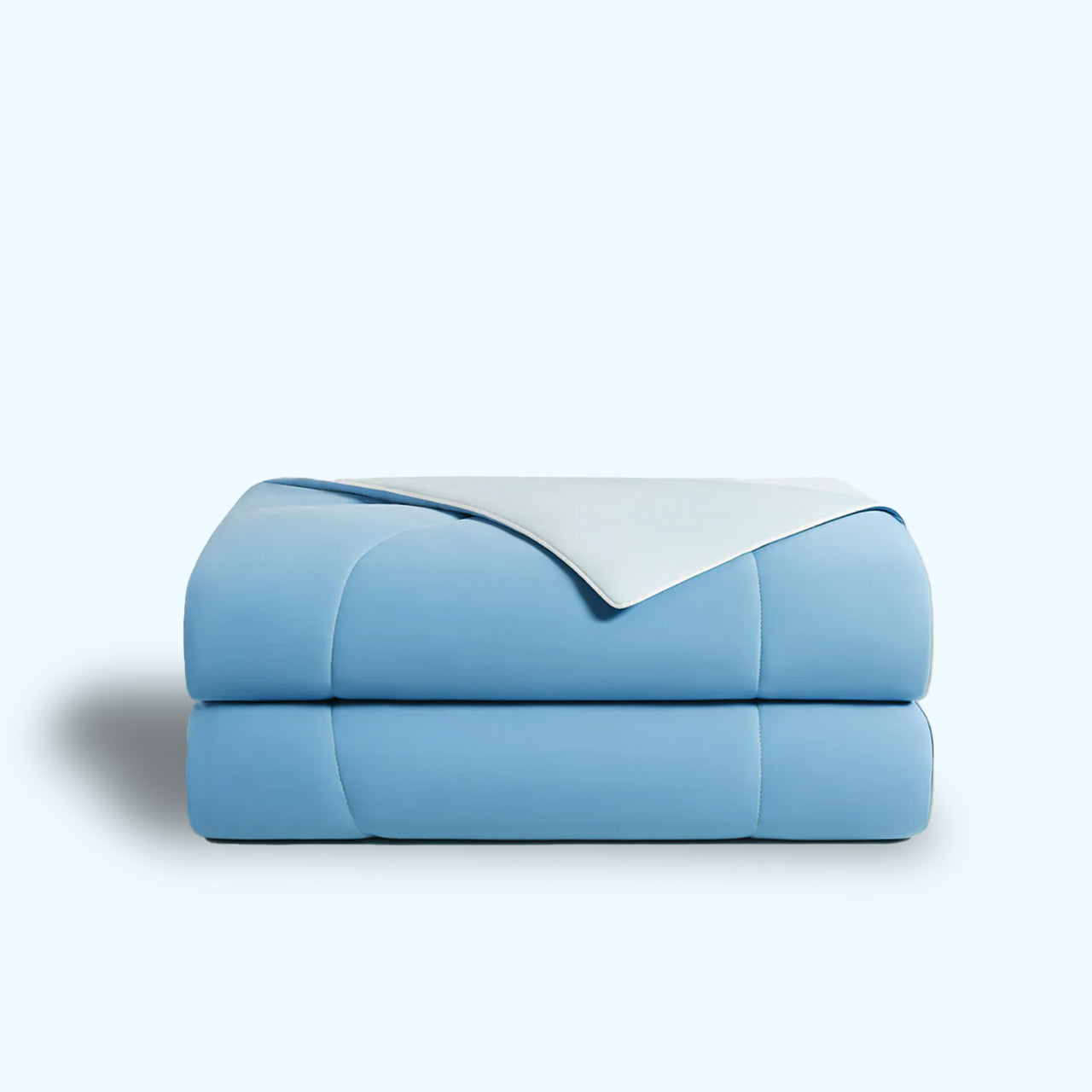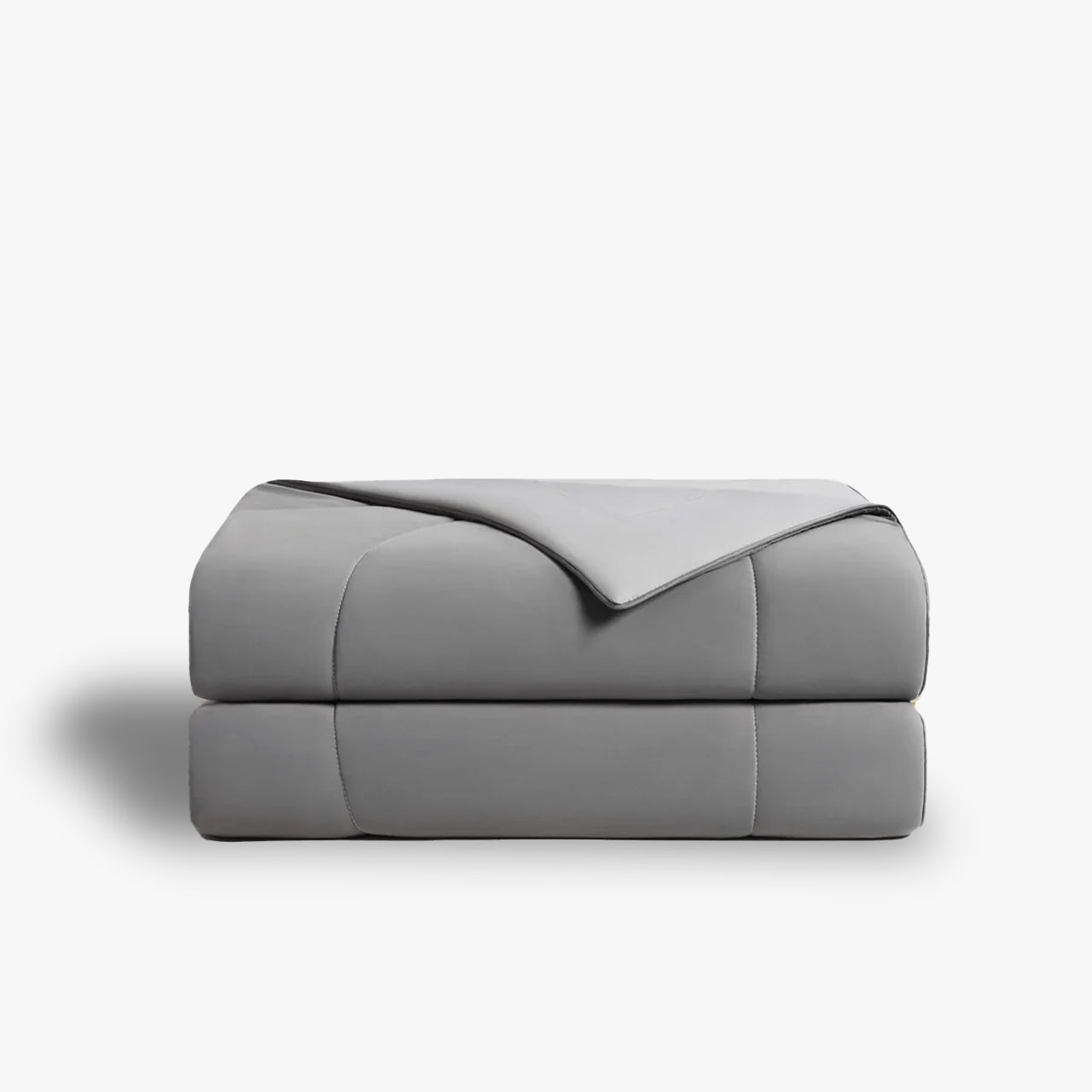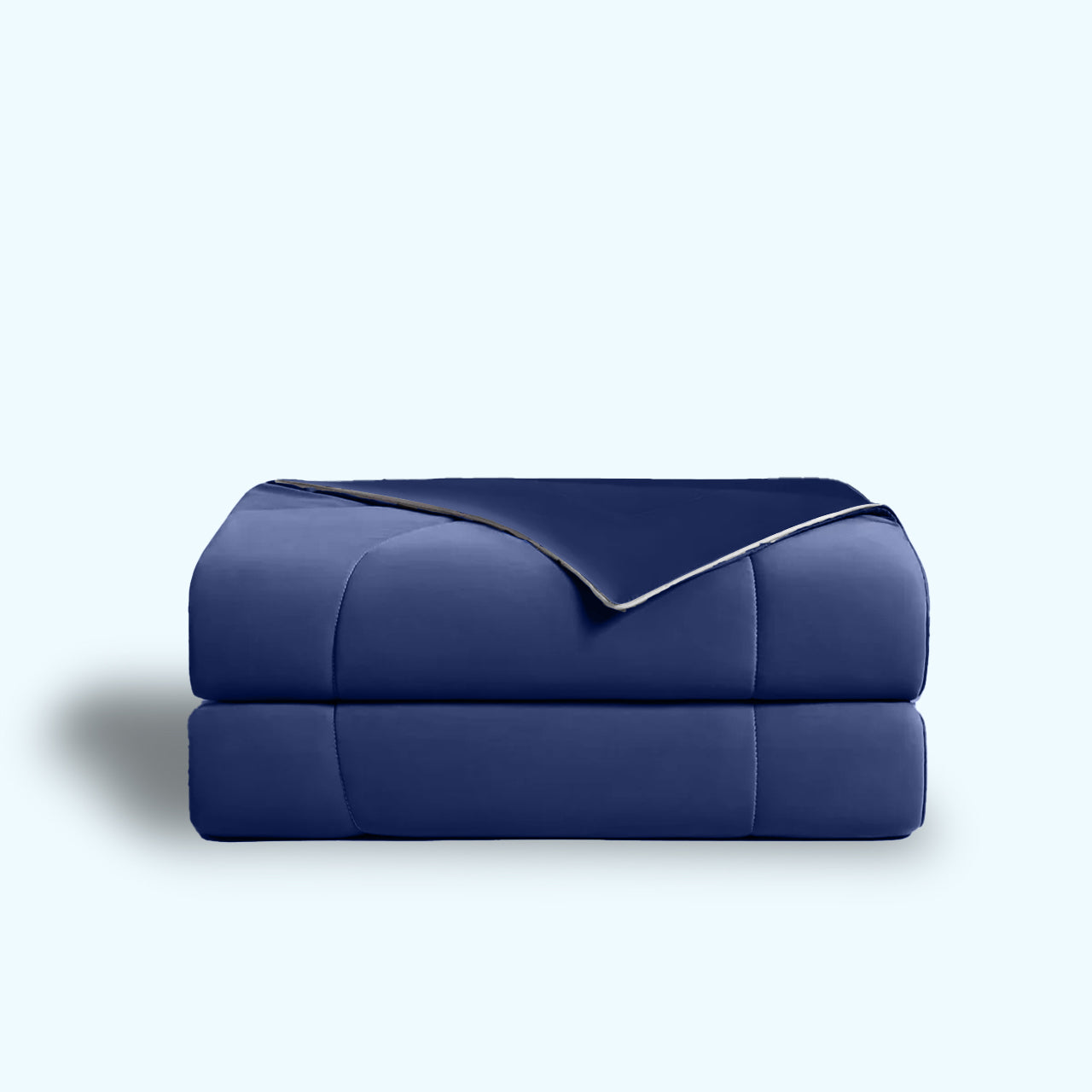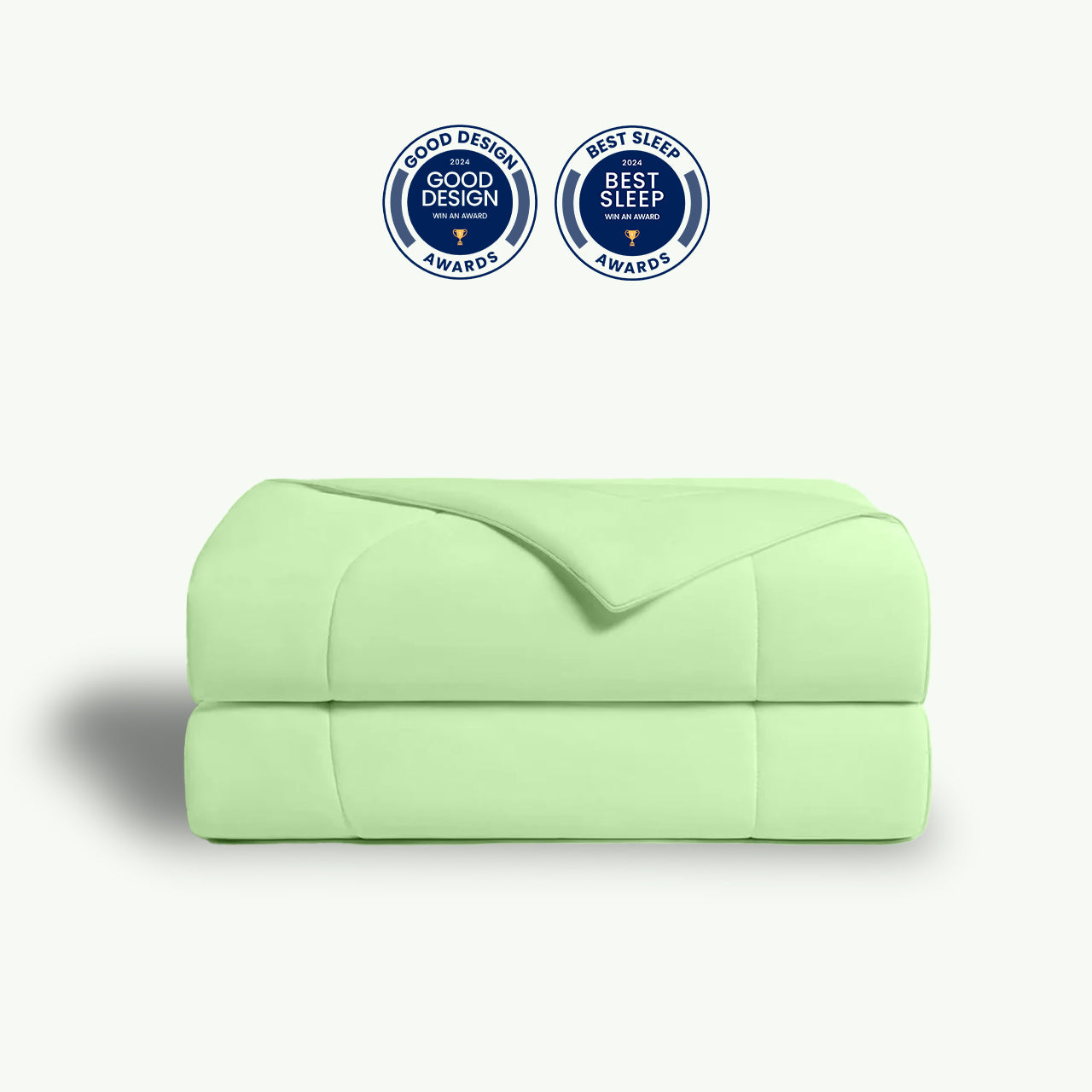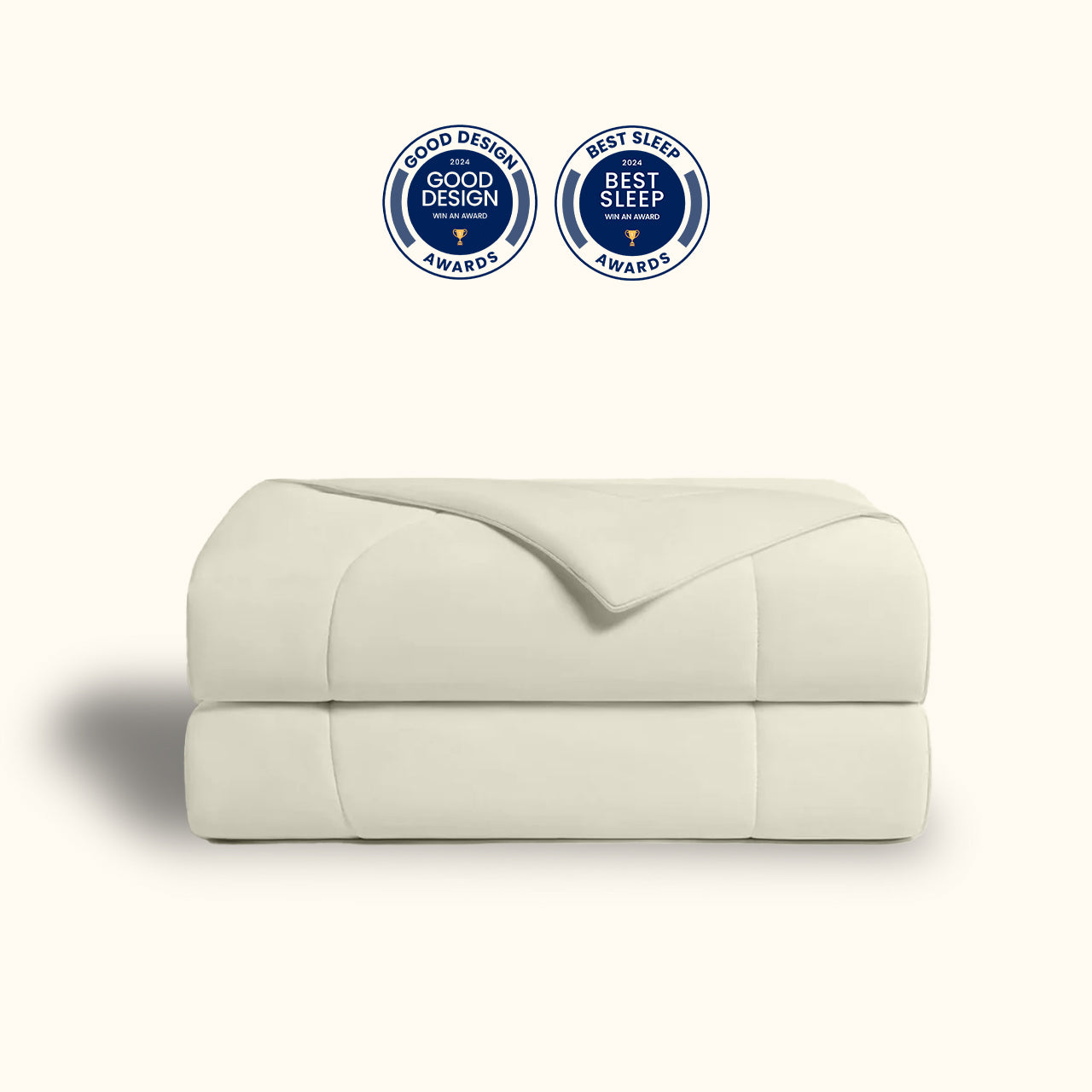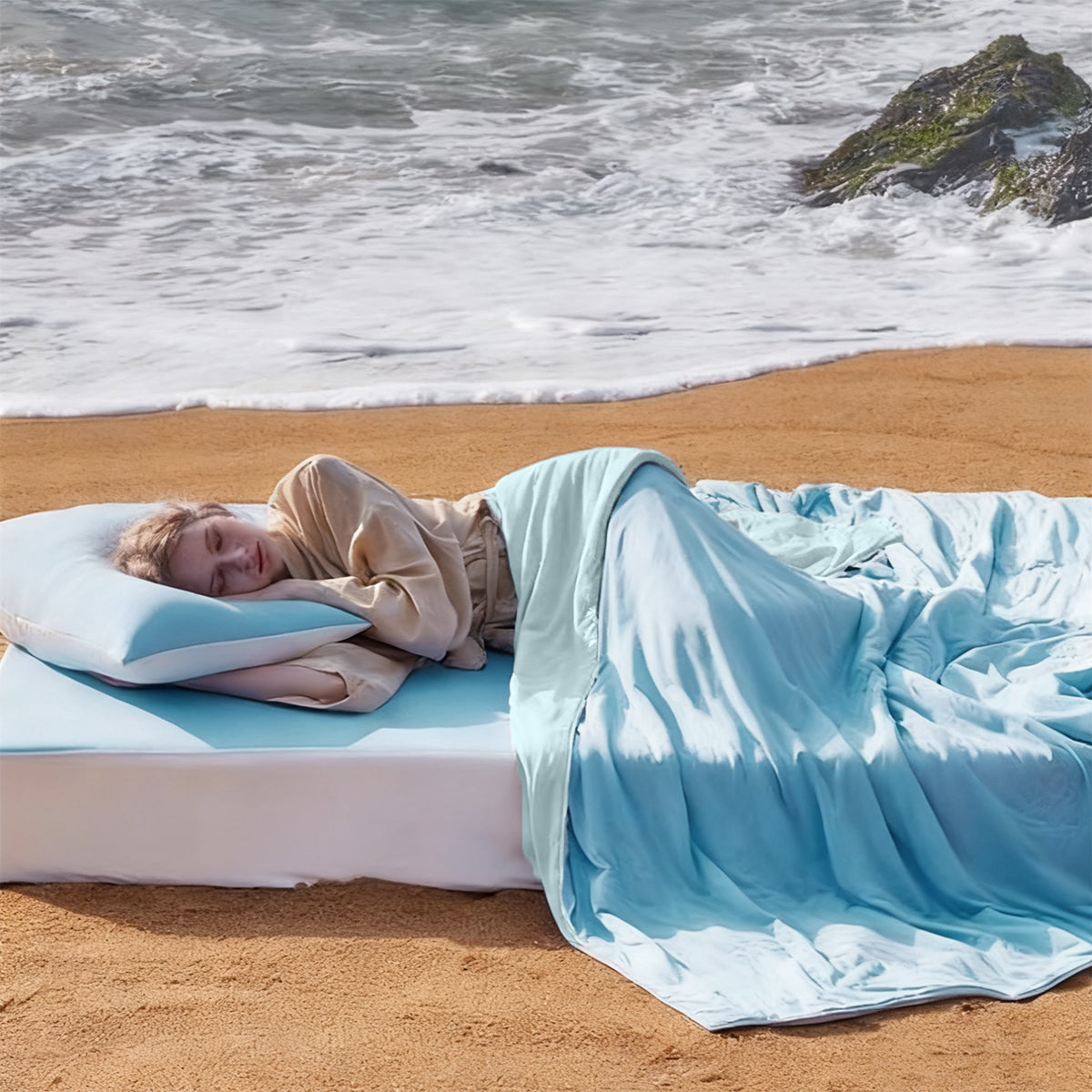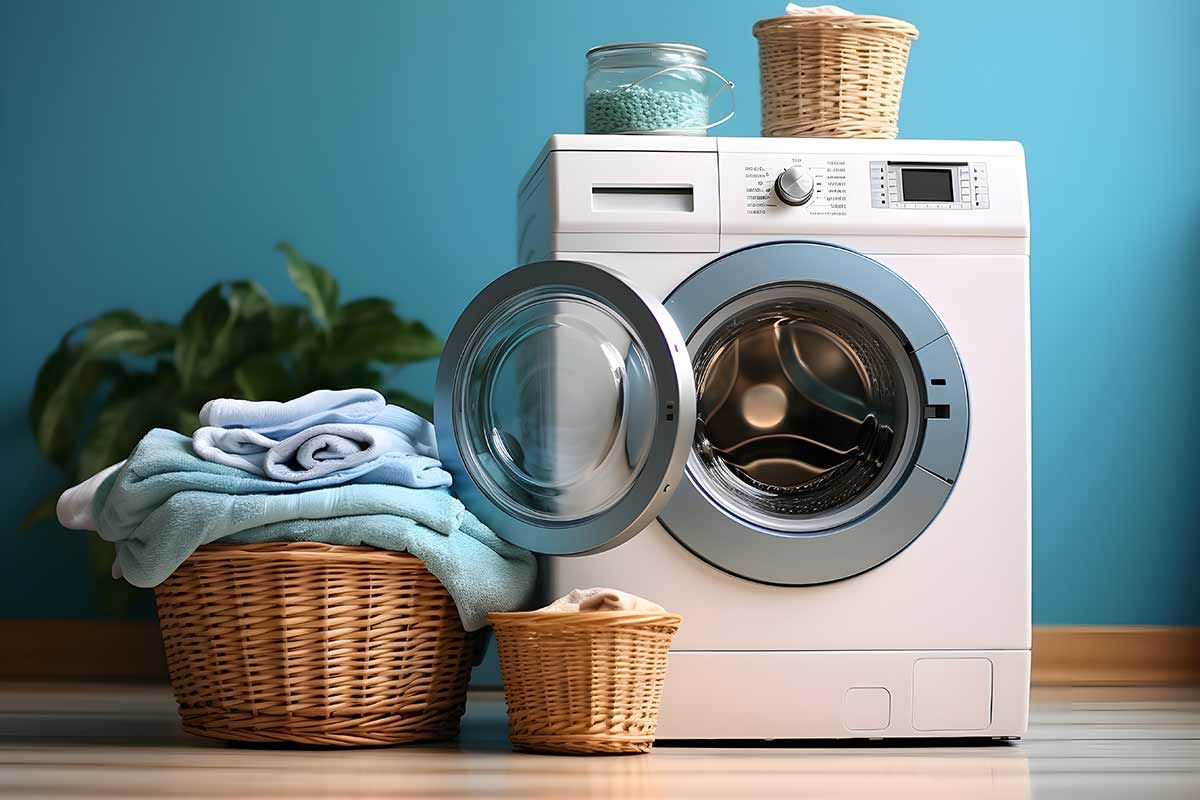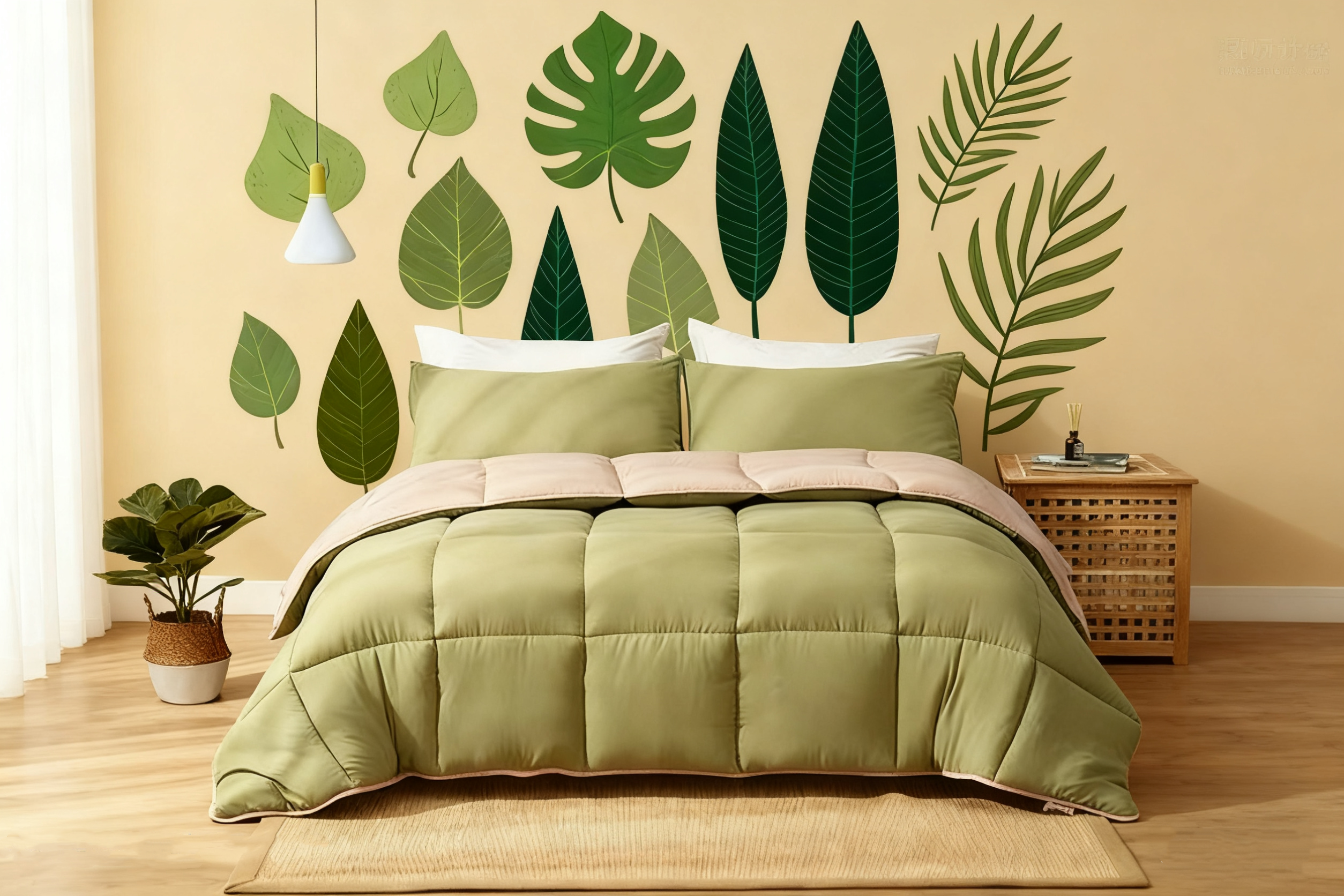When people think about down comforters, most first think of their great warmth. But among the four natural warming materials—cotton, wool, silk, and down—down comforters offer far more than just warmth. They are soft, light (with no heavy pressure), and keep a steady temperature. They also work well for people with specific health needs.

This makes them ideal for both comfort and health. They are especially good for people with high blood pressure, heart conditions, or rheumatic cold joint pain. What’s more, they create great conditions for far-infrared rays to work, giving you all-around sleep health support.
For people with high blood pressure or heart conditions, sleep health in fall and winter is extra important. Heavy comforters feel like a "hidden burden." They press on your chest and make it hard to breathe. This puts your body in a tense state and can cause blood pressure to jump. That’s one big reason high blood pressure problems happen more often in winter. But down comforters are different. Their natural fluffy clusters mean they are much lighter. For the same warmth, a down comforter is only 1/3 the weight of a cotton comforter and 1/2 the weight of a wool comforter. It wraps around you easily but doesn’t weigh you down or block your breathing. This stops heavy comforters from making your blood pressure rise in the first place.

At the same time, staying cold can make heart and blood pressure issues worse. When you’re cold, your blood vessels narrow. This makes it harder for blood to flow and adds stress to your heart. Down comforters have high fluffiness. They form a stable warm layer that locks in your body heat quickly. This keeps you warm nonstop, helps blood flow smoothly, and stops blood vessels from narrowing due to cold. It eases stress on your heart and blood system, so you can sleep more peacefully in winter.
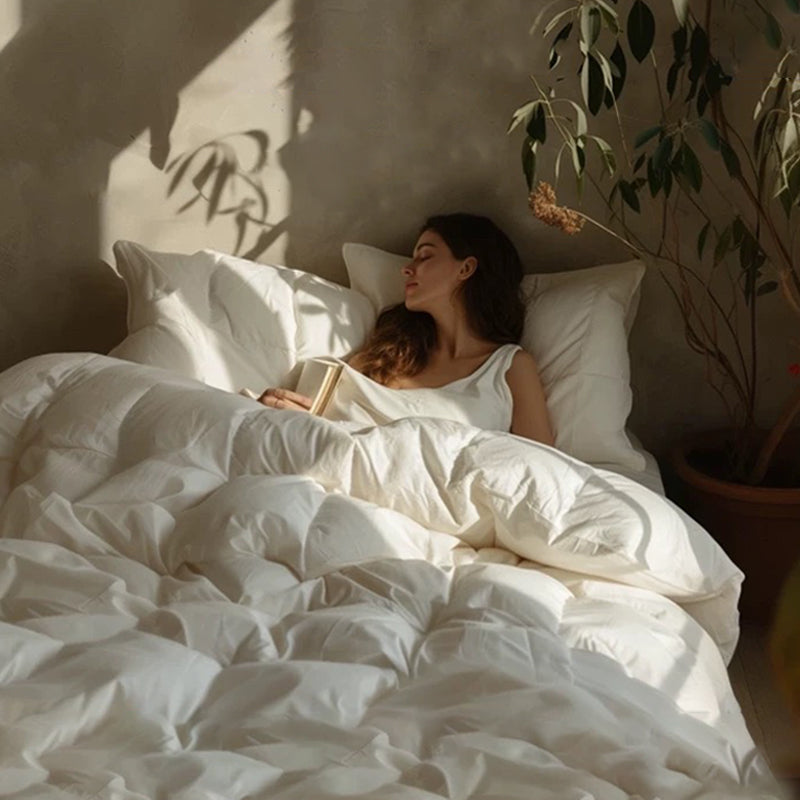
Rheumatic cold joint pain is common for older adults in fall and winter. When the weather turns cold, muscle and joint pain often gets worse. Two main things cause this: first, the cold itself. Second, sweat getting trapped while you sleep (this makes you feel damp and cold). Moisture builds up around your joints, letting cold "invade" your body and making pain worse. Down comforters fix both problems. First, their great warmth keeps your joints at a steady temperature, so cold doesn’t trigger pain. Second, down has tiny, radiating fibers with lots of small holes. These holes absorb sweat from your body fast and let moisture escape into the air. This keeps the comforter dry, stops dampness from harming your joints, and eases the discomfort of rheumatic cold joint pain.

Another great thing about down comforters: they help far-infrared rays work better (far-infrared rays ease tiredness and boost health). Far-infrared rays mainly help blood flow better and improve metabolism. But they can only work well if your body is warm and relaxed. If you’re cold, your blood vessels narrow—and even far-infrared rays can’t help blood flow much. Down comforters solve this with their steady temperature. They keep the space inside the comforter at 32–34°C (the best temperature for sleep). This isn’t too cold (which would narrow blood vessels) or too hot (which would make your body work too hard). In this warm space, the far-infrared rays your body naturally gives off don’t escape. So these rays can do their job well—boosting blood flow and easing tiredness.

Also, down comforters are light and don’t press on you. This lets your muscles relax fully. Heavy comforters make your muscles tense and add to tiredness, but down comforters don’t. When your body is relaxed, blood flows more smoothly. This helps far-infrared rays work even better—they spread to more parts of your body, easing tiredness and making you feel better overall.

Down comforters’ health benefits have stood the test of time and science. Ancient records (like from the Compendium of Materia Medica, a classic Chinese medical book) note that "goose belly down is soft and gentle, good for calming babies’ discomfort." Today, in Europe, down is used to help with joint pain, nerve pain, high blood pressure, and other issues. Research groups in France and Germany even call down comforters "the most ideal bedding." Down comforters are more than just warm. They fit the health needs of specific groups, help far-infrared rays work, and are your best choice for healthy sleep in fall and winter. Choosing a good down comforter isn’t just choosing warmth—it’s choosing softness, dryness, and healthy sleep.




